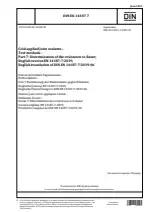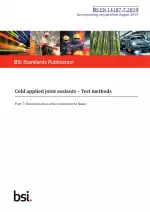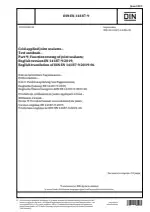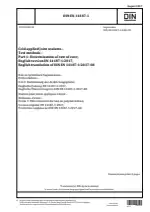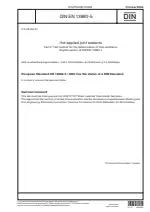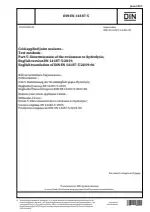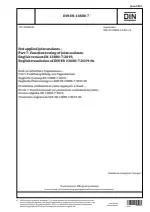Cold Applied Joint Sealants - Test Methods - Part 7: Determination of the Resistance to Flame
Also Known As:
DIN EN 14187-7 is a standard that outlines a test method for determining the resistance to flame of cold applied joint sealants. The purpose of this standard is to ensure that the sealants used in joints in roads, airfields, and other trafficked areas are able to resist flame. This is important for the safety and durability of these sealants, as they are subjected to various conditions and potential fire hazards in these environments.
The test method described in this standard provides a systematic and reliable approach to assess the resistance to flame of cold applied joint sealants. It specifies the procedures and requirements for carrying out the test, including the preparation of test specimens, the use of a test apparatus, and the criteria for evaluating the results.
By conducting this test, manufacturers and users of cold applied joint sealants can confidently assess the flame resistance of these products and determine their suitability for use in specific applications. This standard aims to provide consistent and accurate results, enabling informed decisions to be made regarding the selection and use of joint sealants in various traffic-related environments.
| Descriptors | Airfields, Circulation and space systems (buildings), Cold, Cold application, Concrete floors, Construction, Construction materials, Fire resistance, Flame resistance, Health protection, Joint filling, Joint sealants, Joint sealings, Occupational safety, Resistance, Road construction, Roads, Streets, Test pieces, Testing, Testing conditions, Testing devices, Checking equipment, Resistors |
| ICS Codes | 13.220.50 - Fire-resistance of building materials and elements 93.080.20 - Road construction materials |
| Language(s) | English |
| File Size | 931.8 KB |

